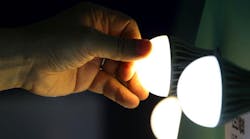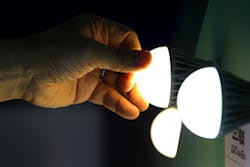A proposal under consideration at the California Energy Commission (CEC) would limit lighting choices for consumers according to the National Electrical Manufacturers Association (NEMA), which provided comments to the CEC earlier this month. The draft rule, NEMA says, would compel California residents to buy more costly, less energy-efficient LED bulbs for their homes than consumers in other states, without countervailing benefit.
“The lighting industry’s disagreement with the CEC’s proposed regulation for LED bulbs revolves around the consumer’s perception of the color of light,” explained NEMA Vice President of Government Relations Kyle Pitsor. “It is a nuanced technical point in lighting science about which experts disagree, but the CEC proposal ignores crucial tradeoffs that innovative manufacturers make to ensure that consumers are satisfied: first, that consumers get the right quality of light for their particular needs; second, that the price of the light bulb will continue to decrease; and third, that they continue to stimulate demand for the most efficient LED bulb. The CEC proposal fails all three of these tests because it would overregulate the LED bulb specifications that California consumers will be forced to buy, creating unnecessary barriers to achieving California’s efficiency targets.”
NEMA said it has urged the CEC to revise the proposed energy-efficiency targets for decorative, reflector, and directional LED lights and agrees with the proposed starting energy-efficiency target for omnidirectional LED bulbs, which are viewed as aggressive yet achievable. The targets for each type of LED bulb must be achievable with current technology, striking an appropriate balance between efficiency, product availability, and consumer needs and cost.
Under the proposed regulation, an LED bulb would be required to meet very specific requirements for individual color elements that make up the color rendition of artificial light. The regulation focuses on a lighting performance parameter known as color rendering index (CRI), which attempts to express how colors shift when compared to a defined source, and which the lighting industry is working to replace.
NEMA has published a Fact Sheet about the proposed regulations: NEMA Analysis of California Energy Commission 45-Day Language Proposal for Title 20 Regulations for LED Lamps (PDF)












